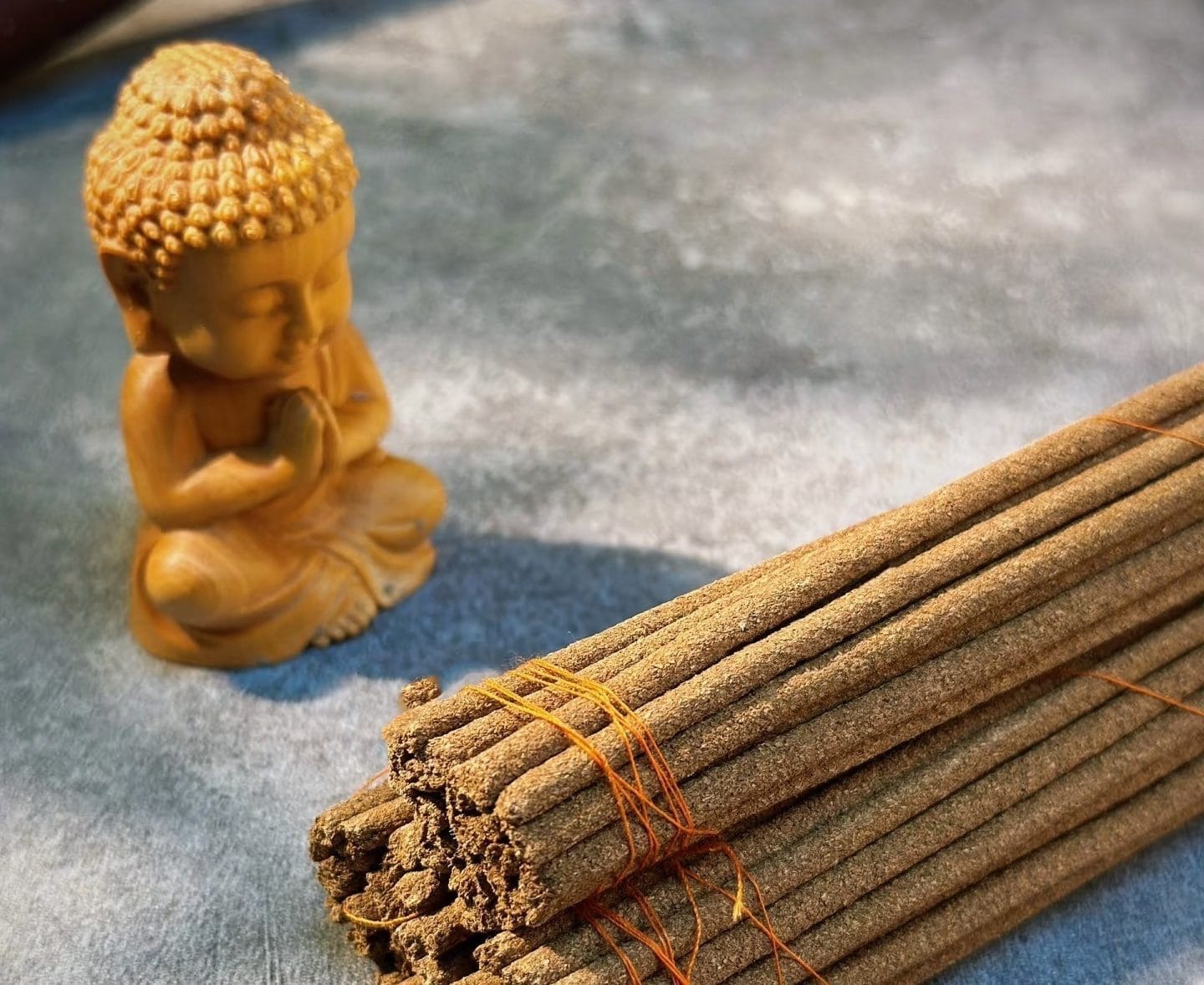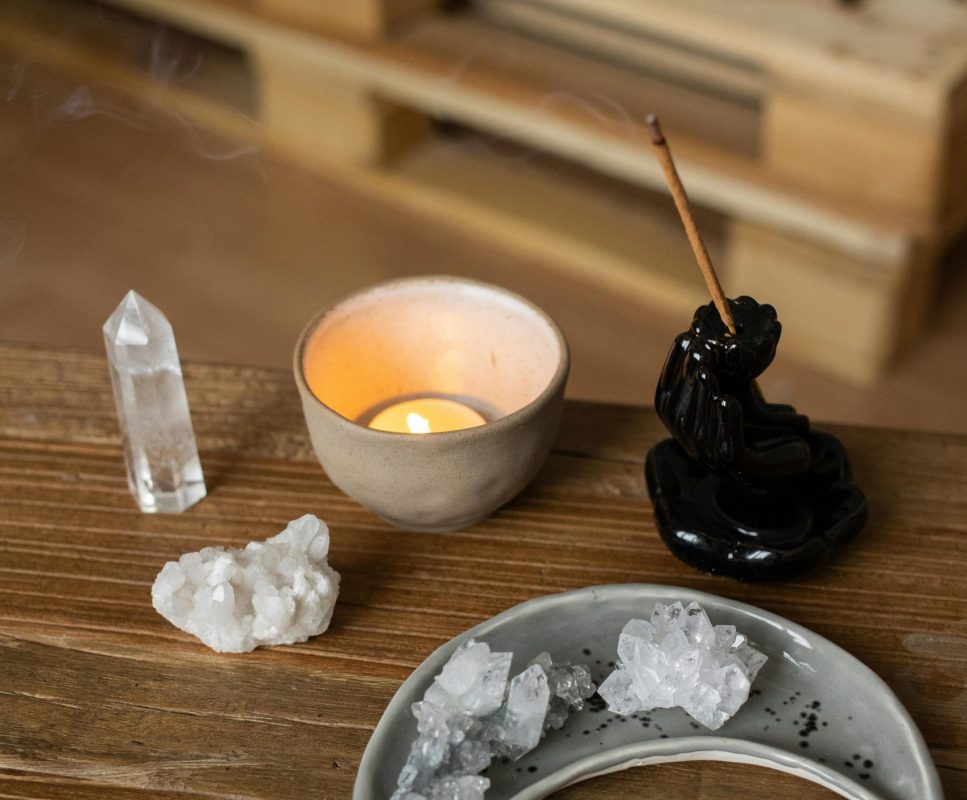Blog
The Connection Between Zen and Tibetan Incense: A Journey to Inner Peace

Zen and Tibetan incense may seem like two distinct traditions, but when explored deeply, their connection is undeniable. Both are rooted in spiritual practices that aim to quiet the mind, enhance meditation, and bring peace to the soul. In this blog, we’ll explore how Tibetan incense plays a significant role in Zen practices, and how its fragrant smoke can guide us on our journey toward mindfulness and enlightenment.
The Zen Tradition: Finding Stillness in the Present Moment
Zen, a school of Mahayana Buddhism that originated in China and later flourished in Japan, emphasizes direct experience and meditation (zazen) as the path to enlightenment. Unlike intellectual study or ritualistic practices, Zen encourages practitioners to experience reality as it is—free from distractions and preconceptions. The practice of Zen meditation invites the practitioner to focus on the present moment, shedding mental clutter and connecting deeply with the body and mind.
Central to Zen meditation is the idea of “shikantaza,” or “just sitting.” This practice requires complete stillness, with the practitioner focusing solely on their breath, body, and thoughts. But to achieve this stillness, the environment must be conducive to such focus. This is where incense comes in.
The Role of Tibetan Incense in Meditation
Tibetan incense, made from a blend of aromatic herbs, spices, and other natural materials, has been used for centuries in Tibetan Buddhist rituals and meditation practices. The rich, earthy scents of Tibetan incense are crafted to purify the air and create an environment conducive to spiritual focus. Much like Zen meditation, the use of incense helps anchor the mind to the present moment, allowing the practitioner to let go of distractions and find deeper concentration.
Tibetan incense is not just about the scent—it’s about the energy it carries. Tibetan monks have long believed that the smoke and fragrance of their incense have the ability to purify both the physical environment and the mind. This purification helps to create a peaceful space, where the practitioner can engage in mindfulness or prayer without interference from outside distractions. The deep, grounding aromas, such as sandalwood, juniper, and agarwood, evoke a connection to nature and the earth, which is essential for spiritual grounding in both Zen and Tibetan Buddhist practices.

The Connection Between Zen and Tibetan Incense
- Creating Sacred Space
Both Zen and Tibetan Buddhism place a great emphasis on the environment. In Zen, the practice of creating a “zendo” (meditation hall) is essential, where the space is clean, simple, and free from distractions. Tibetan incense enhances this environment by purifying the space, creating a serene and sacred atmosphere. This aligns with Zen’s belief that the space in which one practices meditation should be clear of distractions, supporting a focused mind. - Mindfulness Through the Senses
Zen encourages practitioners to be mindful of all their senses, not just their thoughts. The gentle smoke of Tibetan incense engages the sense of smell, which can be an effective tool for grounding and bringing attention to the present moment. As the incense burns, its fragrance subtly fills the room, inviting a deeper sensory awareness that aligns with the Zen philosophy of being present and aware of one’s environment. - Enhancing Meditation
Both Zen meditation and Tibetan incense offer ways to quiet the mind and deepen spiritual practice. The scent of Tibetan incense, like the gentle rhythm of the breath in Zen meditation, provides an anchor for the wandering mind. The presence of incense helps create a multi-sensory meditation experience—allowing the practitioner to breathe in the aroma, focus on the sensation of the smoke, and harmonize their thoughts in the quiet space. - Symbolism of Transcendence
In Zen, there’s a strong emphasis on letting go of attachments and ego, allowing the practitioner to transcend the self and connect with a higher state of consciousness. Tibetan incense’s rising smoke symbolizes this transcendence—just as the smoke dissipates into the air, so too can the mind release distractions and find peace. This symbolism is in line with Zen teachings on impermanence and the nature of existence. - A Path to Spiritual Purification
Tibetan incense is believed to purify the space and mind, just as Zen meditation is a practice of inner purification. The act of lighting incense before meditation becomes a ritualistic purification, signaling the practitioner’s intention to let go of negative energy and prepare for deeper mindfulness. As the incense burns, it not only cleanses the environment but also sets the stage for a deeper connection to one’s inner self.
The Healing Power of Scent: A Universal Bridge
The connection between Zen and Tibetan incense ultimately lies in their shared goal of healing and spiritual growth. Both traditions recognize the importance of creating a sacred space for reflection, silence, and meditation. The incense serves as a bridge, offering the practitioner a way to engage their senses and enter a state of deep meditation where time and ego dissolve.
Scent has a powerful effect on the body and mind. In the same way that Zen helps to cultivate inner stillness, Tibetan incense can help to cultivate a sense of peace, relaxation, and clarity. The subtle aromas evoke a sense of calm, inviting mindfulness, and drawing the practitioner deeper into the present moment.

Final Thoughts: A Unified Journey
Whether through the disciplined practice of Zen or the spiritually grounded rituals of Tibetan Buddhism, the goal is the same: inner peace and enlightenment. Tibetan incense plays a key role in both traditions by creating an environment that supports deep meditation, mindfulness, and spiritual connection. It serves as a tool for purification, focus, and transcendence, helping practitioners of both Zen and Tibetan traditions quiet their minds and embrace the present moment.
So, the next time you light Tibetan incense before your meditation, remember that you’re not just filling the room with fragrance—you’re creating a sacred space for healing, mindfulness, and spiritual growth. In both Zen and Tibetan practices, the path to inner peace begins with the breath, and the incense is there to guide you every step of the way.
Let the soothing aroma of Tibetan incense help guide you into your own journey toward mindfulness and tranquility. 🌿🕯️











